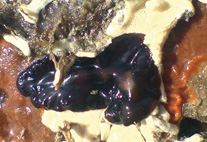Abstract
Onuphis farensis sp. nov. (Annelida, Polychaeta) is described, based on a population inhabiting intertidal sandbanks in the mesotidal coastal lagoon of Ria Formosa (Southern Portugal). It can be distinguished from all other known species within the genus by having bi– and tridentate pseudocompound hooks on the first 4 chaetigers, single filament branchiae from chaetiger 5, and subacicular hooks from chaetiger 9. The species was previously collected in the Bay of Cádiz and Isla Cristina (SW Spain), in a similar habitat to Ria Formosa, but referred to O. geophiliformis Moore, 1903. The taxonomic status of other Onuphis species recorded in the European waters is also discussed. On the whole, O. pancerii Claparède, 1868, described from the Gulf of Naples, has been treated as a junior synonym of O. eremita Audouin & Milne-Edwards, 1833, but taking the more restrictive definition of this species accepted today, should be considered as a valid Mediterranean species. Finally, O. opalina (Verrill, 1873) and O. rullieriana (Amoureux, 1977) may be synonymous, as both species are similar morphologically, occur at similar depths, and have partially overlapping geographical distributions. The different diagnostic characters utilised for the new species are analysed, with the number of chaetigers with postchaetal lobes determined to be a poor taxonomic character for the genus Onuphis, proving to be size-related. A synoptic table with all worldwide species of the genus Onuphis is provided, together with a dichotomic key for the species hitherto recorded in the European and nearby waters.

